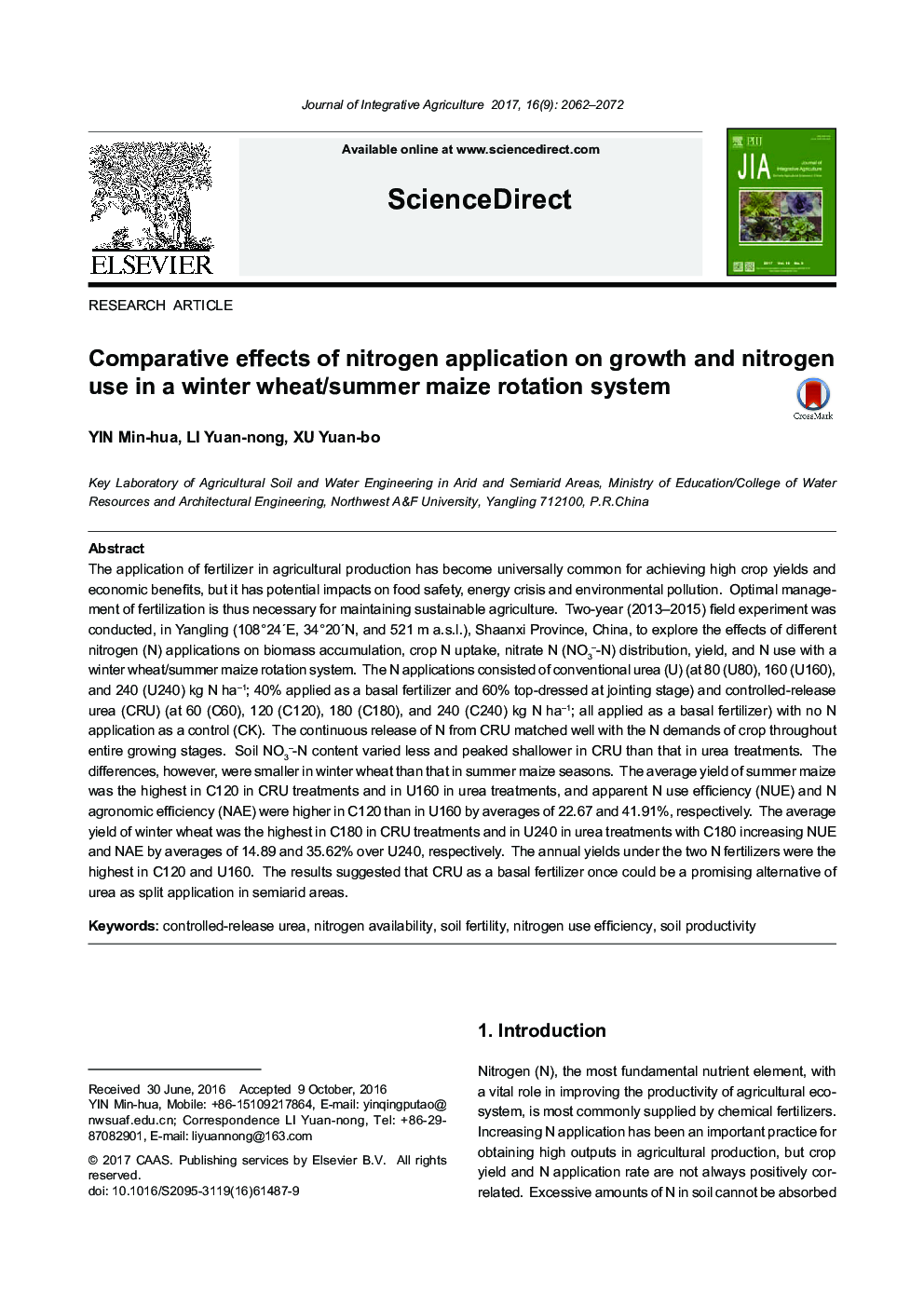| Article ID | Journal | Published Year | Pages | File Type |
|---|---|---|---|---|
| 8875880 | Journal of Integrative Agriculture | 2017 | 11 Pages |
Abstract
The application of fertilizer in agricultural production has become universally common for achieving high crop yields and economic benefits, but it has potential impacts on food safety, energy crisis and environmental pollution. Optimal management of fertilization is thus necessary for maintaining sustainable agriculture. Two-year (2013-2015) field experiment was conducted, in Yangling (108°24â²E, 34°20â²N, and 521 m a.s.l.), Shaanxi Province, China, to explore the effects of different nitrogen (N) applications on biomass accumulation, crop N uptake, nitrate N (NO3â-N) distribution, yield, and N use with a winter wheat/summer maize rotation system. The N applications consisted of conventional urea (U) (at 80 (U80), 160 (U160), and 240 (U240) kg N haâ1; 40% applied as a basal fertilizer and 60% top-dressed at jointing stage) and controlled-release urea (CRU) (at 60 (C60), 120 (C120), 180 (C180), and 240 (C240) kg N haâ1; all applied as a basal fertilizer) with no N application as a control (CK). The continuous release of N from CRU matched well with the N demands of crop throughout entire growing stages. Soil NO3â-N content varied less and peaked shallower in CRU than that in urea treatments. The differences, however, were smaller in winter wheat than that in summer maize seasons. The average yield of summer maize was the highest in C120 in CRU treatments and in U160 in urea treatments, and apparent N use efficiency (NUE) and N agronomic efficiency (NAE) were higher in C120 than in U160 by averages of 22.67 and 41.91%, respectively. The average yield of winter wheat was the highest in C180 in CRU treatments and in U240 in urea treatments with C180 increasing NUE and NAE by averages of 14.89 and 35.62% over U240, respectively. The annual yields under the two N fertilizers were the highest in C120 and U160. The results suggested that CRU as a basal fertilizer once could be a promising alternative of urea as split application in semiarid areas.
Keywords
Related Topics
Life Sciences
Agricultural and Biological Sciences
Agricultural and Biological Sciences (General)
Authors
Min-hua YIN, Yuan-nong LI, Yuan-bo XU,
